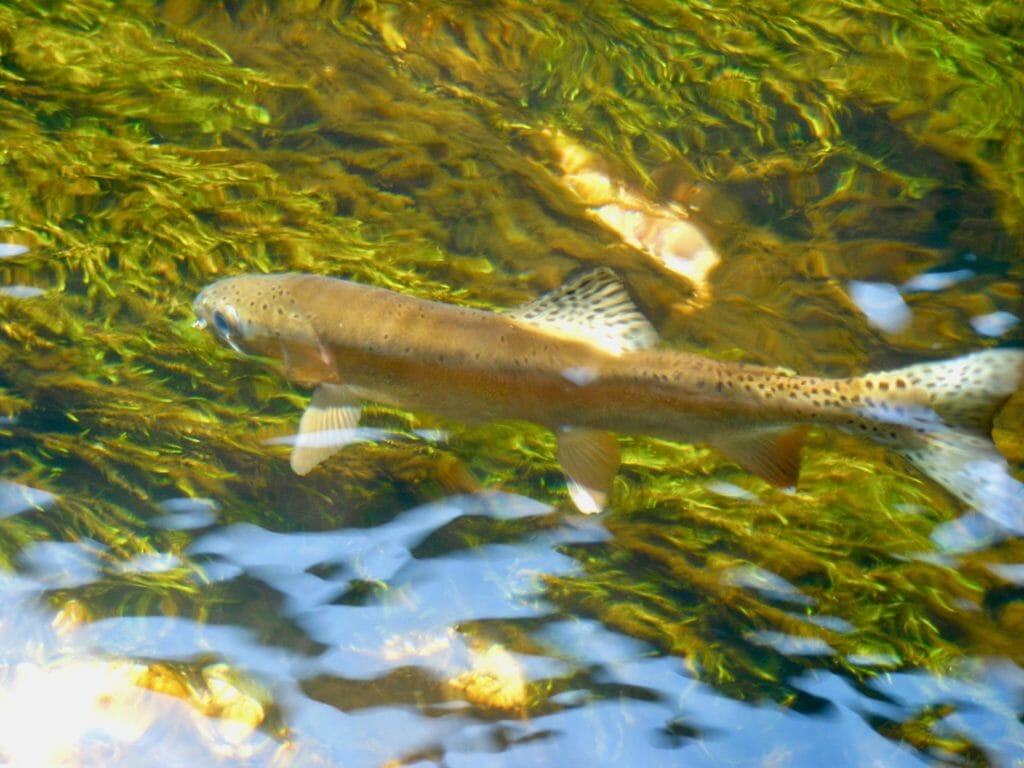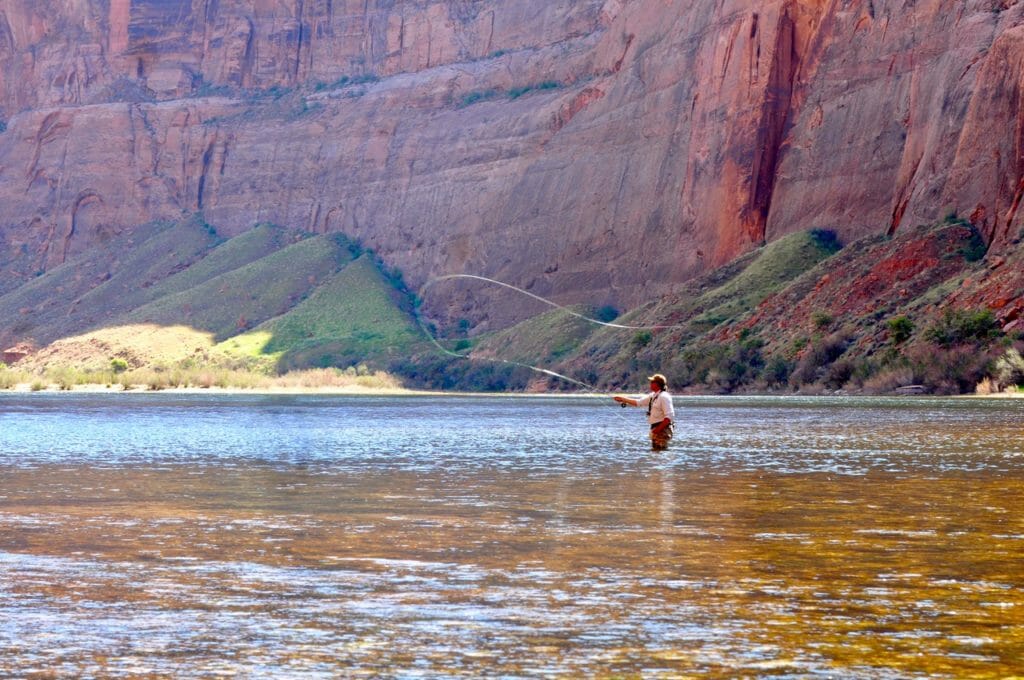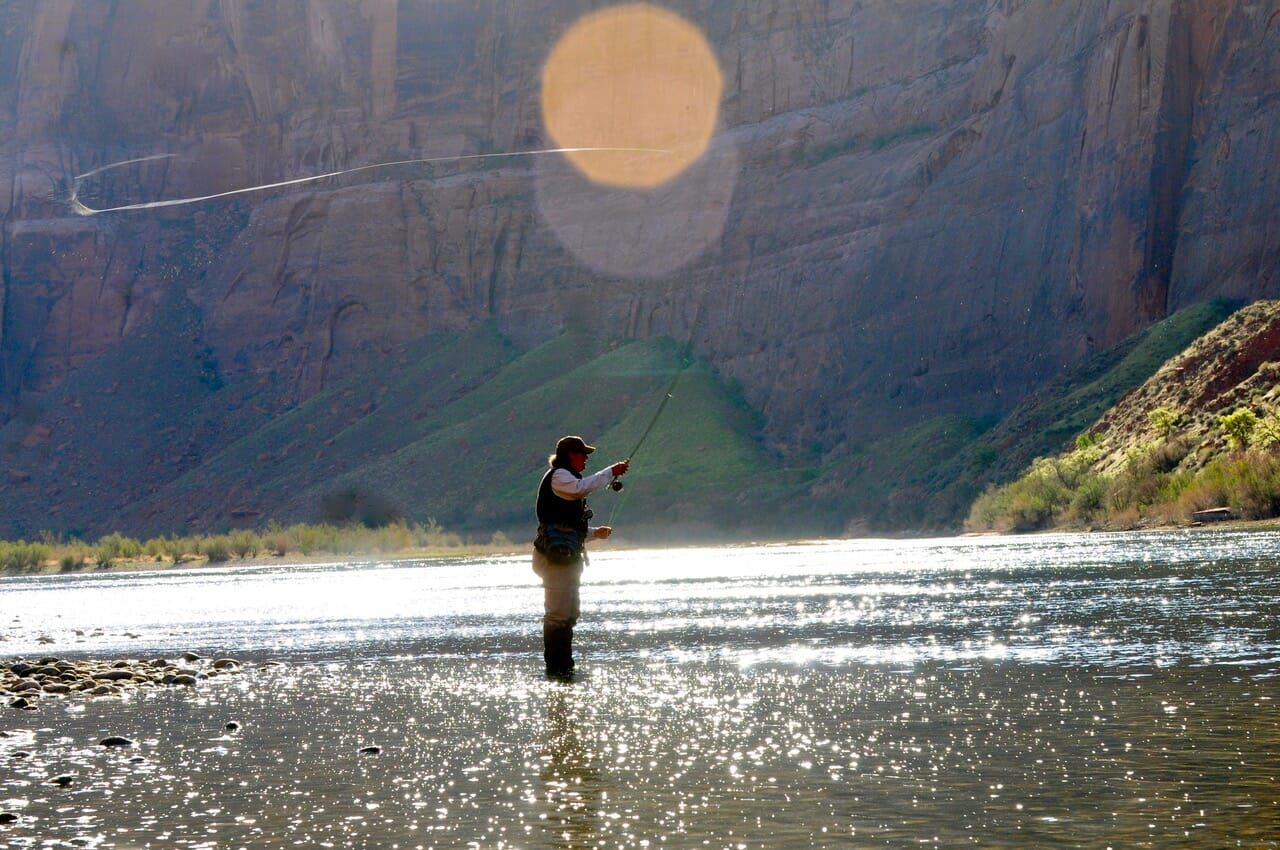As TU founder Art Neumann famously stated, “Take care of the fish and the fishing will take care of itself.”
But we’re predominantly fly fishing, after all. So what about the bugs? Who’s looking after them?
As it turns out — on the Colorado River below Glen Canyon Dam, anyway — the U.S. Geological Survey is doing just that. It may mark the dawn of Bugs Unlimited.
Loosely known as the “bug flows,” an ongoing USGS experiment that alters the flow of water from Lake Powell appears to have boosted the number of aquatic insects that fish in the river eat, the Associated Press recently reported. And according to survey data gathered by the Arizona Game and Fish Department during last year’s experiment, that correlated to angler reports of 18 percent more trout caught upstream of Lees Ferry, the largest tailwater on the Colorado River.

USGS scientists have found that releasing low, steady flows of water from Glen Canyon Dam on weekends gives the eggs that bugs lay on substrate just below the water’s surface a better chance of survival. Something about those steady flows is encouraging bugs to emerge as adults from the water, likely leading to more eggs, more larvae and even more adults.
More study is needed to fine tune the data, so a second bug flow experiment began earlier this month and will run through August.
“It’s a powerful reminder that flows really matter, that just a couple days a week of steady flow can illicit massive emergence,” USGS research ecologist Ted Kennedy told the AP.
The bug flows are part of a larger plan approved in late 2016 to manage operations at Glen Canyon Dam, which holds back Lake Powell and has established a prized rainbow trout fishery in the tailwater extending downstream to Lees Ferry, launch point for the Grand Canyon. Researchers are recommending three consecutive years of bug flows and remain hopeful that rarer insects such as stoneflies and mayflies will become more frequent around Lees Ferry.
The agency has already recorded a sharp increase in the number of caddisflies through the Grand Canyon. With the aid of citizen scientists using black light traps, researchers saw the number of caddisflies caught increase from 91 per hour in 2017 to 358 per hour last year, outpacing the number of midges for the first time since the agency began tracking them in 2012.
Meanwhile, the number of adult midges throughout the Grand Canyon rose by 34 percent on weekends versus weekdays during last year’s experiment. Intensive sampling one weekend in August showed an 865 percent increase in midges between Glen Canyon Dam and Lees Ferry, the agency said.
The bug flows don’t change the amount of water the U.S. Bureau of Reclamation must deliver downstream through Lake Mead to Arizona, Nevada, California and Mexico. The lower levels on the weekend are offset by higher peak flows for hydropower during the week. And the broader plan includes periodic high flows designed to push sand built up in Colorado River tributaries through the Grand Canyon as well as other experiments that could help native fish like the endangered humpback chub, along with non-native trout.
The Lees Ferry fishery has been defined by its up-and-down character since rainbow trout were introduced after the completion of Glen Canyon Dam in the mid-1960s. With 83 reservoirs in its upper basin and 10 reservoirs in the lower basin, the Colorado River Basin is considered the most heavily regulated river system in the world. And the colossal dam in the heart of it all — Glen Canyon — has been something of a water management experiment since its origin.
Halting the flow of the warm, turbid river at Lake Powell, the dam releases cold, clear water from the bottom of the reservoir that provides hydroelectric power and establishes ideal conditions for a sport fishery below. Along with the trout, an array of insects, scuds, cladophora algae, snails and crayfish were also put in the river.

During its first decade, the fishery remained largely undiscovered as the nutrient-rich river grew massive trout upwards of 10 pounds. Hitting its prime in the 1970s, the section was designated as a blue-ribbon trout fishery by the Arizona Game and Fish Department in 1981. Erratic river flows over the next two decades led to corresponding rises and ebbing of the fishery, although it’s the daily surge of hydropower demands that creates the most notable impact.
Early morning anglers typically witness the river rise around their waders as increasing energy needs dictate the amount of water flowing through the channel. The advantage is that anglers actually have the opportunity to scout the riverbed for potential holding areas before they are covered with water, then drift a cast over them as the river rises and fish move into prime spots.
The downside is that the fishing often turns off when the river begins to recede, typically by 2 p.m. But thanks to the bug flow experiment, the fishery is likely to remain more consistent, at least on weekends through August. (Hydropower took a hit of about $165,000 — about half of what was expected — in the 2018 experiment, the Geological Survey said.)
Whether it’s the low, steady flows that are helping anglers get their flies in front of more fish or the increase in insects that’s improving the bite right now still remains to be seen. Or it could be attributed to something else entirely.
“We’ll see if it happens again this year,” AGFD fisheries biologist David Rogowski said of last year’s 18 percent catch increase. “I didn’t even really expect it would change the catch-per-unit rate at all.”
With any luck, the fishing will continue to grow with the flow.



